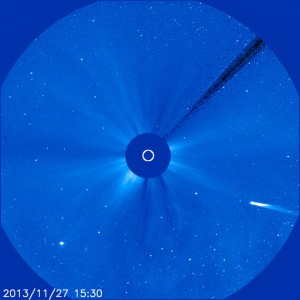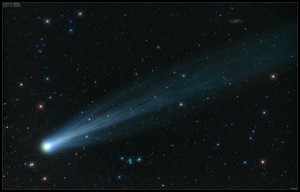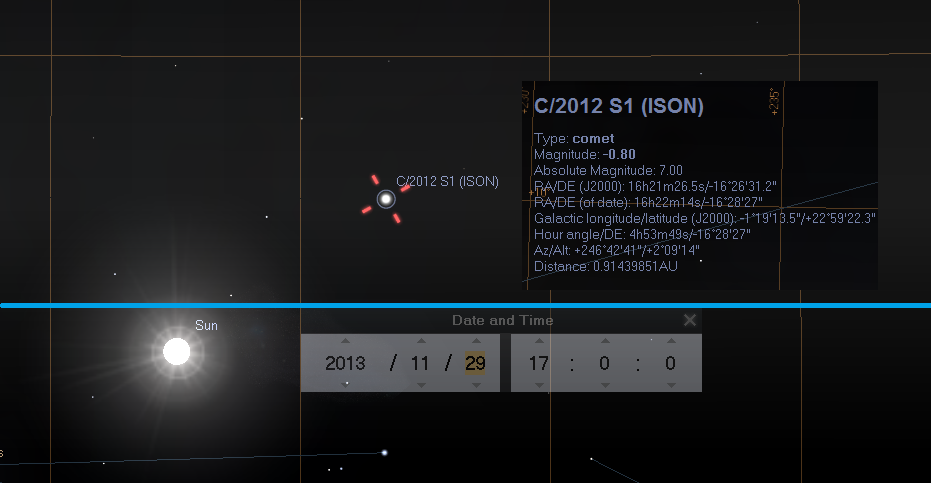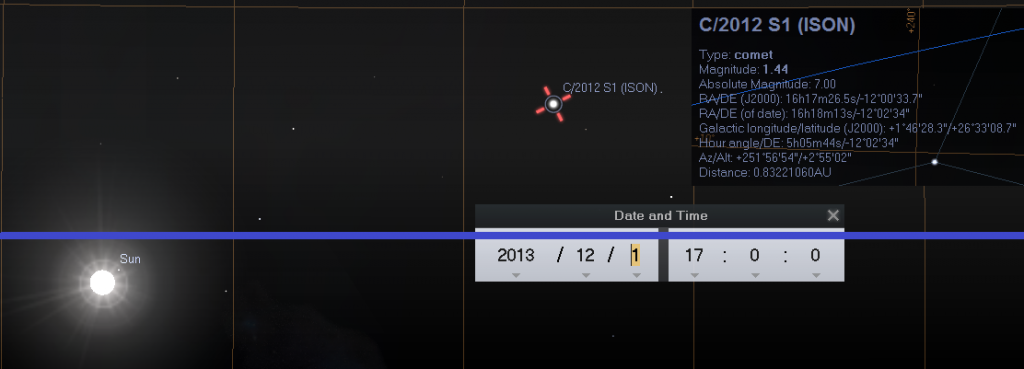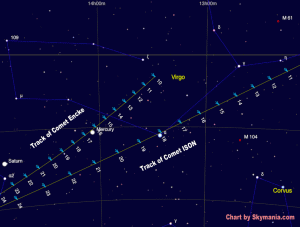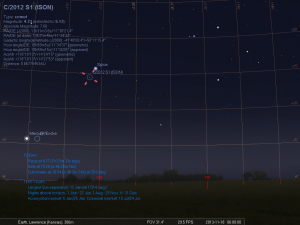See full article for images and after Thanksgiving sky location for Comet ISON.
Finally, the heavens clear and the Sun appears. Too bad for me it's a day or two late to capture final pictures of Comet ISON before it passed out of visual range. Right now the comet is on it's way around the Sun and is too close to be visible until after Thanksgiving. Fortunately for you, I've found a few pictures of ISON to share which dwarf anything I'm currently capable of providing on my own.
Including current pictures of the comet's approach to the Sun via the SOHO satellite
Comet C/2012 S1 ISON – View from SOHO (http://sohowww.nascom.nasa.gov)
Animated View
Most Current Image
And the the most spectacular shot I've seen to date. This has so much stunning detail it looks like a painting. Taken by Damian Peach (http://www.damianpeach.com) on November 15th 2013. This picture was captured using the following settings and equipment: 0.11m F5.6 STL-11k camera. LRGB: L: 5x2mins. RGB: 1x2mins.
November 29th, 2013
Viewing the day after Thanksgiving will still be a formidable challenge because (assuming the comet survives the trip around the Sun) ISON will still be very close to the Sun angularly. You'll want to look very close to the horizon where the Sun set after sunset about 4:45 PM to 5:00 PM local time. At this time the Sun will only be a few degrees below the horizon and ISON will only be a few degrees above it. This also means that you'll need an extremely good Western vantage point.
The picture below provides a rough idea of where the comet will be with respect to the Sun. The blue line represents the horizon line. Keep in mind this picture does not take into consideration horizon obstructions such as buildings and trees or any atmospheric problems such as the sky being too bright or overcast.
December 1st, 2013
By Sunday, the comet will be a little bit further away from the Sun and should provide an easier sight. While the comet will continue to be an early evening object (which is great for anyone who's not a night owl) it should be a naked eye sight through the first several weeks in December, depending on brightness, maybe longer. You will still find it best for observing the comet if you find a clear sight with a vantage point that gives you an unobstructed view of the Western horizon. Continue to look for it in the very early evening sky right after sunset.
The picture below provides a rough idea of where the comet will be with respect to the Sun. The blue line represents the horizon line. Keep in mind this picture does not take into consideration horizon obstructions such as buildings and trees or any atmospheric problems such as the sky being too bright or overcast.
Happy Thanksgiving and happy viewing! Keep an eye out for updates on this as the comet swings around the Sun.

